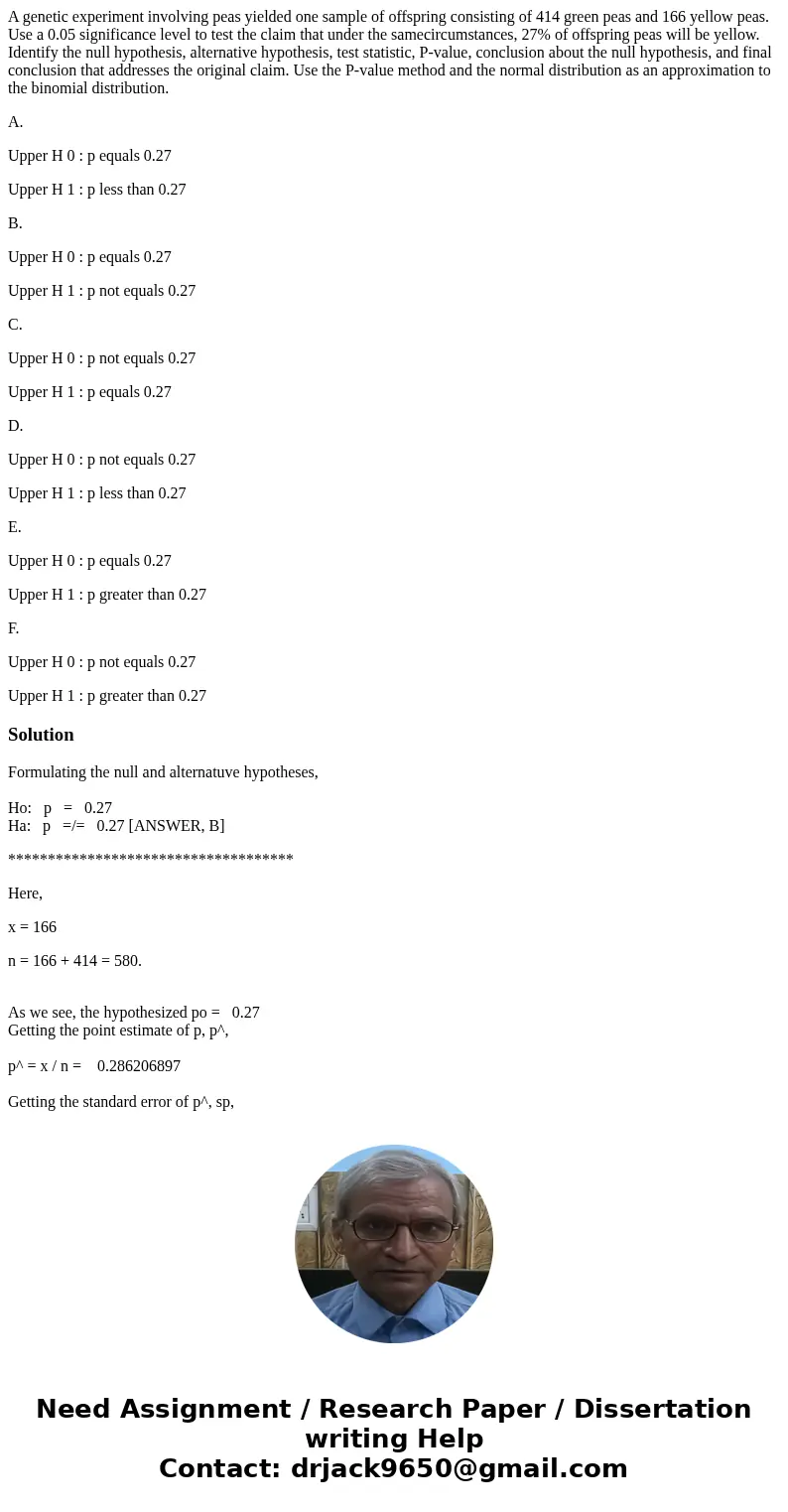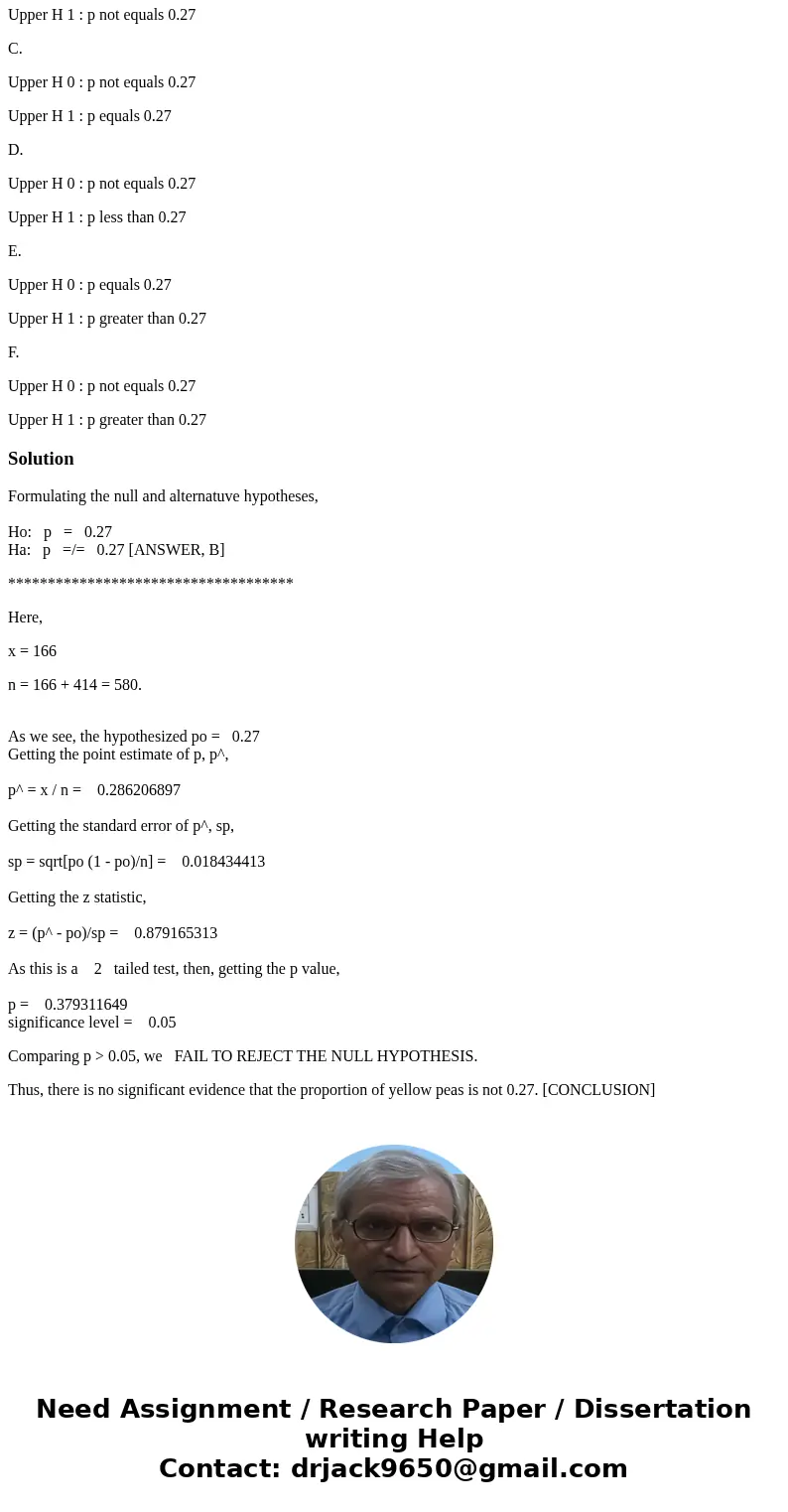A genetic experiment involving peas yielded one sample of of
A genetic experiment involving peas yielded one sample of offspring consisting of 414 green peas and 166 yellow peas. Use a 0.05 significance level to test the claim that under the samecircumstances, 27% of offspring peas will be yellow. Identify the null hypothesis, alternative hypothesis, test statistic, P-value, conclusion about the null hypothesis, and final conclusion that addresses the original claim. Use the P-value method and the normal distribution as an approximation to the binomial distribution.
A.
Upper H 0 : p equals 0.27
Upper H 1 : p less than 0.27
B.
Upper H 0 : p equals 0.27
Upper H 1 : p not equals 0.27
C.
Upper H 0 : p not equals 0.27
Upper H 1 : p equals 0.27
D.
Upper H 0 : p not equals 0.27
Upper H 1 : p less than 0.27
E.
Upper H 0 : p equals 0.27
Upper H 1 : p greater than 0.27
F.
Upper H 0 : p not equals 0.27
Upper H 1 : p greater than 0.27
Solution
Formulating the null and alternatuve hypotheses,
Ho: p = 0.27
Ha: p =/= 0.27 [ANSWER, B]
************************************
Here,
x = 166
n = 166 + 414 = 580.
As we see, the hypothesized po = 0.27
Getting the point estimate of p, p^,
p^ = x / n = 0.286206897
Getting the standard error of p^, sp,
sp = sqrt[po (1 - po)/n] = 0.018434413
Getting the z statistic,
z = (p^ - po)/sp = 0.879165313
As this is a 2 tailed test, then, getting the p value,
p = 0.379311649
significance level = 0.05
Comparing p > 0.05, we FAIL TO REJECT THE NULL HYPOTHESIS.
Thus, there is no significant evidence that the proportion of yellow peas is not 0.27. [CONCLUSION]


 Homework Sourse
Homework Sourse